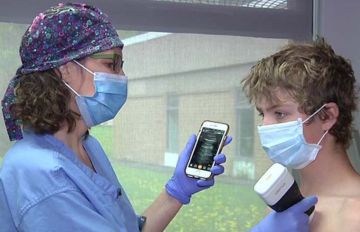
The IN-POCUS project uses handheld ultrasound to detect COVID-19.
Photo credit: Global BC
ICICS has been incubating and supporting multidisciplinary thematic research clusters since 2017. We are now catalyzing synergies among them by supporting large-scale integrated sensing research projects drawing upon cluster expertise and research outcomes.
Sensing research hinges on design, with user requirements embedded in projects from inception, and continually informing their execution. The Designing for People (DFP) research cluster is a locus of design talent across disciplines at UBC, and leads this work. The Centre for Artificial Intelligence Decision-making and Action (CAIDA) is UBC’s centre of excellence for AI research and knowledge mobilization, and provides AI and machine learning expertise. Biomedical Imaging and AI (BMIAI) uses AI to analyze medical imaging data for personalized medicine, while the Bionics Network creates systems that integrate live cells with artificial materials and electronics to restore capabilities that have been lost through injury, disease or aging. ICICS’ central role in the UBC research translation pipeline as host to the HATCH startup accelerator ensures maximum impact of research projects.

“Ubiquitous sensing is becoming a reality with the development of 5G networks and the Internet of Things. This will have enormous implications for monitoring the effects of climate change, emergency preparedness, smart cities, natural asset management, healthcare, and many other areas. ICICS can play a key role in these developments by converging a range of expertise in information and communications technology, engineering, AI, biomedical research, and knowledge mobilization to realize new sensing technologies with deep impact.”
Professor Robert Rohling, ICICS Director
Research Highlights
Intelligent Ultrasound (iUS)
Intelligent Ultrasound (iUS): Re-Imagined for Access
The medical image is critical to 21st century health care. Each year 3.6B images are captured globally—but almost all in urban settings. Patients must travel for life-saving care, causing delays and expense. and sometimes lives. Our vision is to improve health care equity by making ultrasound affordable and easy to use, with no special operator training required.
We are advancing this vision by developing intelligent ultrasound (iUS) a convergence of user-centric design, flexible forms, integrated ultra-fast microelectronics, and real-time connectivity paired with trusted AI-based automation. iUS will transform today's bulky, expensive hospital-based systems into a family of patient-oriented tools that can be used by doctors and nurses anywhere.
“There is an urgent need to provide high-quality imaging diagnostics services to all Canadians wherever they are.”
Dr. Oron Frenkel, Director of Point of Care Ultrasound, St. Paul’s Hospital,Vancouver
2022: UBC Participating in $50M International Research Program to Reduce Stillbirth Incidence
Sponsor: Wellcome Leap
Team: Robert Rohling, Professor, Electrical and Computer Engineering, Mechanical Engineering, UBC; Farah Deeba, Assistant Professor, University of North Carolina, Charlotte
Worldwide, one baby is stillborn every 16 seconds, with profound, long-term emotional consequences for parents. Current assessment tools to predict the risk of stillbirth are inadequate, and progress on solving the problem has been slow.
To address this problem, the UK-based medical research organization Wellcome Leap is funding a 3-year $50M USD ntegrated research program called In Utero. The program draws on a range of expertise worldwide in areas such as ‘omics and imaging to develop integrated measures of maternal, developing baby, and placental function. The goal is to accurately model gestational progression to determine when interventions may be required, and reduce the incidence of stillbirths by one-half.
The UBC team, led by co-applicants Dr. Robert Rohling of UBC and Dr. Farah Deeba of UNC-Charlotte, is contributing their deep expertise in ultrasound imaging to develop biomarkers of placental development such as blood flow that will help predict potential stillbirth and trigger interventions. Results of this research will be integrated with those of the other teams to generate an integrated, effective approach to the problem.
Wellcome Leap is also funding a number of other large-scale health-related research programs intended to produce meaningful results in a relatively short time. These “moonshots” are considered to be part of the “Health Age” ushered in by the COVID-10 pandemic, akin to the Space Age that has spawned so many technological innovations.
2022: Automatic Assessment of Aortic Stenosis with Point of Care Ultrasound
Sponsor: Canadian Institutes of Health Research (CIHR) Project Grant
Team: Purang Abolmaesumi (Lead) Professor, Electrical and Computer Engineering, UBC; Dr. Teresa Tsang, Professor of Medicine, UBC; Director, Echocardiography, Vancouver General Hospital and UBC Hospital; Dr. Michael YC Tsang, Clinical Assistant Professor, Division of Cardiology, UBC; Dr. Oron Frenkel, Emergency Physician St. Paul’s Hospital, Clinical Assistant Professor, Medicine, UBC; Leonid Signal, Associaate Professor, Computer Science, UBC.
As the most prevalent and most deadly valvular heart disease, Aortic Stenosis (AS) is a significant public health problem in Canada. The prevalence of this valvular condition increases with age, with only 1/3 of the patients remaining alive at 5-years following diagnosis. Fortunately, the rapid downhill clinical course and significant mortality associated with this valvular disorder is avoidable with recent advancements in treatment of AS using aortic valve replacement. Recent studies strongly suggest that early detection and timely intervention of clinically significant AS are crucial to achieve favourable clinical outcomes. Comprehensive echocardiography is the clinical standard for the diagnosis of AS. However, since it heavily relies on acquisition of high-quality Doppler imaging and accurate characterization of aortic valve in echo, its usage is hindered for primary care physicians. Referring all patients to comprehensive echocardiography exams is also not practical, given the significant burden it will add to the already strained healthcare system. We propose a paradigm shift in screening and early detection of clinically significant AS in point-of-care settings by streamlining the ultrasound imaging of the aortic valve. Supported by abundant evidence from clinical literature, the experience of our clinical co-applicants, as well as substantial preliminary results on more than 2,000 patient records, our goal is to demonstrate that clinically significant AS can be detected with very high sensitivity and specificity through direct analysis of ultrasound videos using machine learning. We expect that the proposed technology will help the primary care physicians to timely identify and prioritize patients that should be referred for a comprehensive echocardiogram to confirm AS diagnosis and presence of severe disease in order to provide a subsequent life-saving aortic valve intervention
2022: Developing Quantitative Ultrasound Imaging for Organ Inflammation and Fibrosis
Sponsor: UBC Health Innovation Funding Investment (HIFI) Awards
Team: Robert Rohling (Lead) Professor, Electrical and Computer Engineering, Mechanical Engineering, UBC; Dr. Christopher Nguan, MD, Associate Professor, Urologic Sciences; Kelly McNagny, Professor, Medical Genetics; Mei-Lin Bissonnette, Clinical Associate Professor, Pathology and Laboratory Medicine; Maziar Riazy, Clinical Assistant Professor,Pathology and Laboratory Medicine; Tim Salcudean, Professor, Electrical and Computer Engineering, UBC.
Chronic kidney disease affects one in ten Canadians; it is a progressive disease leading to end-stage kidney disease which requires expensive renal replacement therapy (dialysis or transplant). The kidneys develop chronic inflammation, glomerular sclerosis, and fibrosis regardless of the initial trauma. Subclinical damage is frequently missed due to the low sensitivity of blood markers. Biopsy is the most precise means of detecting damage, but it is invasive, pricey, and risky. CT, MRI and blood/urine tests are poor for early stage disease detection due to their insensitivity and cost. This gap may be filled by the use of intelligent kidney ultrasonography (SKU). SKU quantifies the physical morphology of tissue at the microstructural scale. It seeks to provide a sensitive and non-invasive approach for diagnosing subclinical kidney disease across all etiologies via artificial intelligence (AI).This collaboration will establish a novel pipeline for the development of quantitative ultrasound imaging biomarkers for inflammatory and fibrotic illness.
For the first time, a quantitative version of ultrasound could replace biopsy as the standard for assessing inflammation and fibrosis of an organ. This work intends to prove this concept using histopathology as the gold standard.
2022: Rising from the Pandemic: Towards Sustainable Development of Machine Learning Technologies for Point-of-Care Ultrasound Imaging
Sponsor: NSERC Alliance Missions program
Team: Purang Abolmaesumi (Lead) Professor, Electrical and Computer Engineering, UBC; Dr. Teresa Tsang, Professor of Medicine, UBC; Director, Echocardiography, Vancouver General Hospital and UBC Hospital; Robert Rohling, Professor, Electrical and Computer Engineering, Mechanical Engineering, UBC.
In point-of-care ultrasound (POCUS), a healthcare practitioner uses a portable ultrasound device to diagnose conditions at the bedside, whether in an urban hospital, rural clinic, or a remote location. When used appropriately, POCUS can reduce wait times for diagnostic tests, make patient treatment pathways more efficient, streamline transfers to save healthcare costs, and save lives. Although this technology is becoming cheaper and more portable, its use is constrained by the high levels of training required by its operators to become proficient in interpretation and analysis. Through a $2.5M investment from Canada's Digital Technology Supercluster and a partnership with BC company Clarius Mobile Health, the team has developed the Intelligent Network for POCUS (IN-POCUS). POCUS devices have been deployed across BC to provide ultrasound technology to frontline physicians. These POCUS devices are augmented with machine learning (ML) technologies from the UBC team, with a focus on cardiac imaging, obstetrics, and Covid-19 diagnosis. The current project tackles two of the key challenges facing sustainable development and maintenance of these ML technologies: (1) automatic detection of ML failure modes and (2) continuous learning from new data to ensure models stay current. Timely addressing of these challenges will ensure that Canada maintains its competitive edge globally in POCUS.
2022: Using Artificial Intelligence, Big Data and Imaging to Improve Stroke Risk Assessment and Management
Sponsor: Canadian Institutes of Health Research (CIHR) Project Grant
Team:Purang Abolmaesumi (Lead) Professor, Electrical and Computer Engineering, UBC;Dr. Teresa Tsang, Professor of Medicine, UBC; Director, Echocardiography, Vancouver General Hospital and UBC Hospital.
Identification of patients at increased risk for stroke is most often based on clinical factors including the age of the patient and the presence or absence of conditions such as abnormal heart rhythm, hypertension, diabetes, and heart failure. Risk assessments that rely only on these clinical factors have many limitations. They do not, for example, take into account differences in stroke risk between patients with well controlled hypertension versus those with uncontrolled blood pressure. Previous research has shown that changes in the structure and function of the heart can influence risk for stroke. Echocardiography is a non-invasive imaging technique that is widely used to rapidly obtain information on heart structure and function.
This project uses artificial intelligence to analyze large amounts of echocardiography image data to identify features associated with increased risk for stroke. The team has previously developed machine learning approaches to automate echocardiography image analysis and will apply this technology to clinical and echocardiography data collected at large tertiary care centres over the past 10 years to find new ways to predict disease in patients at risk of stroke. The new imaging risk factors identified in this study will then be tested in 10,000 patients to confirm their performance. It is expected that the risk factors identified in this study can be combined with clinical assessment to improve patient care by identifying more individuals at risk of stroke, earlier in their disease, so they can be started on effective preventative treatments sooner.
2021: Remote Human Teleoperation over 5G—A Haptically Enabled Mixed Reality System for Telemedicine
Sponsor: UBC-Rogers 5G Partnership
Project Partner: Rogers Communications
Team: Tim Salcudean (Lead) rofessor, Electrical and Computer Engineering, UBC; Purang Abolmaesumi, Professor, Electrical and Computer Engineering, UBC; Dr. Oron Frenkel, Emergency Physician St. Paul’s Hospital, Clinical Assistant Professor, Medicine, UBC; Dr. Christopher Nguan, MD, Associate Professor, Urologic Sciences; Dr. Helge Rhodin, Assistant Professor, Computer Science, UBC; Vincent Wong, Professor, Electrical and Computer Engineering, UBC
This project utilizes advances in 5G technology made possible by the UBC-Rogers 5G Partnership to create a tele-ultrasound system that integrates mixed reality (MR), haptics, control theory, and 5G to expand telemedicine to reach patients in remote and rural communities.In many healthcare tasks, an expert needs to provide remote mentoring to a novice. For remote ultrasound (US) examinations, researchers have proposed two main approaches: guiding a remote novice with voice or graphical commands, or, alternatively, using a remote robot to control the motion of the US probe against the patient by copying the movement of an expert.
This project explores the remote novice wearing a mixed reality (MR) headset and following a 3D virtual tool projected into their spatial MR environment, in effect replacing the robot with a safer, more flexible, expert-controlled human. This novel “human teleoperation” framework is enabled by high bandwidth, low latency 5G communication, MR glasses such as the Microsoft HoloLens 2, inexpensive haptic technology, and an understanding of the control theory required for the approach. By tracking the position and force of the virtual probe with a real one, a person without medical experience can perform US procedures efficiently, controlled by a sonographer or radiologist who moves a haptic device in response to camera, US images, and US probe forces.The proposed system has the potential to train an autonomous agent to replace the expert, to further reduce te strain on the healthcare system and facilitate on-demand scanning and self-evaluation by the patient.
2020: Intelligent Network for Point-of-Care US (IN-PoCUS)
Sponsor: Canadian Digital Technology Supercluster (CDTS)
Lead: Providence Healthcare
Project Partners: Clarius, Change Healthcare, Rural Coordination Centre of BC (RCCBc)
Team: Dr. Oron Frenkel, Emergency Physician, St. Paul’s Hospital, Clinical Assistant Professor, Medicine, UBC; Dr. Teresa Tsang, Professor of Medicine, UBC; Director, Echocardiography, Vancouver General Hospital and UBC Hospital; Purang Abolmaesumi, Professor, Electrical and Computer Engineering, UBC; Robert Rohling, Professor, Electrical and Computer Engineering, Mechanical Engineering, UBC.
iUS research builds on the team's ongoing work developing automated US analysis software for the Canadian Digital Technology Supercluster project (CDTS, $2.6M), Intelligent Network for Point-of-Care US (IN-PoCUS). The iUS team has distributed over 90 handheld units to general practitioners (GPs) in rural, urban, and First Nations communities in BC for use in the cardiac and obstetrics domains. This was in response to an urgent call from BC doctors to increase ultrasound capacity and use in rural BC communities, identified by project partner the Rural Coordination Centre of BC (RCCBc).
Accumulated data are helping the iUS team refine AI-based guidance for high-quality image acquisition and decision support--e.g., when to refer a pregnant person or cardiac patient to specialized facilities. Ongoing study feedback elucidates the specific needs of Canada’s diverse communities.
As Dr. Virginia Robinson of the Fernie-based Rural Coordination Centre says, “The establishment of the COVID network means physicians have been able to share their images with any specialist and receive immediate feedback,” explains “Ultrasound has been a game-changer for rural care in general, allowing immediate diagnoses for triaging and expediting trauma cases to higher levels of care.”
Canada’s Minister of Innovation, Science and Industry, the Honourable François-Philippe Champagne, described IN-PoCUS as “transformational” and “writing history,” and the project was cited in Canada’s 2021 Federal Budget. IN-PoCUS was named a 2020 CDTS Impact Project of the Year.
2020: Point of Care Heart-Lung Imaging for Patients Presenting with COVID-19—Intelligence Precision Modelling for Prediction of Outcomes
Sponsor: Canadian Digital Technology Supercluster (CDTS)
Lead: Providence Healthcare
Project Partners: Clarius, Change Healthcare, Rural Coordination Centre of BC (RCCBc), Vancouver Coastal Health
In this April 2020 response to the "Call for COVID-19 Solutions" issued by the CDTS, iUS researchers distributed handheld ultrasound devices to physicians around BC to collect data from lung scans of COVID-19 patients. The goal of the project is to develop AI algorithms for detection of COVID-19 using portable, handheld point-of-care ultrasound devices, increasing patient access to testing while keeping them away from hospitals. The research outcomes will also be relevant for responses to future pandemics, and expands on the team's 2020 CDTS project, Intelligent Network of Point-of-Care US (IN-PoCUS).
The COVID-19 project was applauded by BC Health minister Adrian Dix, and is co-led by Dr. Oron Frenkel, an emergency physician at St. Paul’s Hospital and a clinical assistant professor at UBC’s faculty of medicine; Dr. Teresa Tsang, UBC cardiologist and professor of medicine and director of echocardiography at Vancouver General Hospital and UBC Hospital; Purang Abolmaesumi, ICICS member and professor of electrical and computer engineering; and Robert Rohling, ICICS Director and professor of electrical and computer engineering and mechanical engineering, “With this scanner, we can potentially detect COVID-19 lung changes earlier while waiting for lab test results,” says Tsang. “This may also enable us to anticipate who will likely deteriorate rapidly, so that we can support these patients optimally from the start.”
2020: Next Generation Micro-ultrasound Technology for Detection and Monitoring of Prostate Cancer
Sponsor: NSERC Collaborative Health Research Projects
Project Partner: Exact Imaging
Team: Purang Abolmaesumi, (Lead) Professor, Electrical and Computer Engineering, UBC; Peter Black, Senior Research Scientist, Vancouver Prostate Centre, Associate Director, Clinical Research, Vancouver Prostate Centre, Professor, Department of Urologic Sciences, UBC.
In this project, ultrasound imaging is being used to implement a new and accurate solution for detection and monitoring of cancer, using prostate cancer (PCa) as a test case. This is the second most common cancer in Canadian men, with about 25,000 new cases per year. Accurate detection of aggressive PCa enables effective treatment of patients through surgical excision of the prostate with minimal risk for recurrence. It also allows continuous monitoring of cancer progression, which is key to improve quality of life, reduce morbidity and increase patient survival.
However, the established ultrasound-guided prostate biopsy is unable to accurately locate tumors, and recently developed magnetic resonance imaging (MRI) approaches to visualize PCa have a very high rate of false positives and miss small and possibly aggressive cancer. The team's unique technology promises to capture changes in prostate tissue at high-resolution. Results will be validated in patients with the help of Exact Imaging, and input from clinicians who will use the technology at the Vancouver Prostate Centre.
2019: Shear Wave Vibro-elastography of the Liver
Sponsor: NSERC Collaborative Research and Development
Project Partner: Philips Medical Systems
Team: Tim Salcudean (Lead) Professor, Electrical and Computer Engineering, UBC; Robert Rohling, Professor, Electrical and Computer Engineering, Mechanical Engineering, UBC; Piotr Kozlowski. Associate Professor, Urologic Sciences, Radiology, UBC.
Liver disease management can benefit from measurement of liver stiffness and fat content. Stiffness can be assessed without biopsy by measuring the propagation speed of shear waves in tissue using magnetic resonance elastography (MRE), where a steady vibration is applied to tissue and the shear wave pattern is measured. Fat content can also be measured with MR imaging. What is needed is MRI-quality measurements at the cost and accessibility offered by ultrasound. In recent work with our partner, we have demonstrated that 3D ultrasound can be used to accurately measure steady-state wave motion induced by multi-frequency steady-state vibrations in tissue-mimicking phantoms and in healthy volunteers. The technique developed, called S-WAVE, currently does not provide real-time feedback to the operator on the quality of the image acquisition and does not provide the stiffness map in real time. Also, imaging of patients is different than imaging healthy volunteers because their livers are much stiffer and have much higher fat content, and the patients involved are often large which makes scanning them difficult, whether by MRI or ultrasound. With our partner in this project, we will: (1) develop methods for real-time display of 2D shear-wave images during S-WAVE data acquisition and of the computed stiffness maps, and evaluate the usability and repeatability of the system in healthy volunteers; (2) compare results acquired with S-WAVE and MRE; and (3) develop a model of fat content from ultrasound attenuation and shear wave attenuation, with MRI as the gold standard. Our technique has the advantage of being able to image the liver volume at depth, through a much simpler examination than by MRI. Its successful implementation has the potential to make a significant impact.
2018: Fabrication and Testing of Polymer-Based Capacitive Micromachined Ultrasound Transducers for Medical Imaging
Sponsor(s): NSERC
Team: Robert Rohling, Professor, Electrical and Computer Engineering, Mechanical Engineering, UBC; Edmond Cretu, Professor, Electrical and Computer Engineering, UBC.
iUS researchers have developed a new ultrasound transducer, or probe, that could dramatically lower the cost of ultrasound scanners to as little as $100. Their patented innovation—no bigger than a Band-Aid—is portable, wearable and can be powered by a smartphone. Conventional ultrasound scanners use piezoelectric crystals to create images of the inside of the body and send them to a computer to create sonograms. Researchers replaced the piezoelectric crystals with tiny vibrating drums made of polymer resin, called polyCMUTs (polymer capacitive micro-machined ultrasound transducers), which are cheaper to manufacture.
Transducer drums have typically been made out of rigid silicon materials that require costly, environment-controlled manufacturing processes, and this has hampered their use in ultrasound, By using polymer resin, the researchers were able to produce polyCMUTs in fewer fabrication steps, using a minimum amount of equipment, resulting in significant cost savings. Sonograms produced by the UBC device were as sharp as or even more detailed than traditional sonograms produced by piezoelectric transducers. The research and preliminary results were originally published in a Nature: Microsystems & Nanoengineering paper.
2016: Quantitative Ultrasound for Detecting Abnormalities of the Placenta
Sponsors: NSERC+ CIHR Collaborative Health Research Project
Leads: Denise Pugash, Associate Member, Obstetrics & Gynaecology, UBC; Women's Hospital; Robert Rohling, Professor, Electrical and Computer Engineering, Mechanical Engineering, UBC.
Successful pregnancy is dependent on an intricate balance between the mother and fetus. The placenta forms the interface between the mother and the fetus, so abnormal placental development or damage can have profound implications on the pregnancy and life-long health of mother and child. Preeclampsia and fetal growth restriction are examples of two diseases that are strongly linked to placental abnormalities and would benefit from early detection to improve outcomes. This research is developing new ultrasound measurements of placental abnormalities, in particular the stiffness of the placenta, using elastography, a technique for measuring the elasticity, or stiffness, of tissue. A particular version of elastography was invented at UBC called SWAVE: Shear Wave Absolute Vibro-Elastography. It is based on a standard ultrasound machine so elasticity measurements of the placenta could be easily added to the standard fetal ultrasound examination of all pregnancies. The combination of standard ultrasound and SWAVE should provide better measures for placental abnormalities, so preventative measures can be taken early. It may also better discriminate normal from abnormal pregnancies to avoid unnecessary extra monitoring and avoid unnecessary interventions such as artificially inducing labour.
2016: INformation FUSion for Echocardiography (INFUSE): A Novel Platform for Automatic Analysis of Echocardiography Data at Any Point-Of-Care
Sponsors: NSERC+ CIHR Collaborative Health Research Project
Team: Dr. Teresa Tsang (Lead), Professor of Medicine, UBC; Director, Echocardiography, Vancouver General Hospital and UBC Hospital; Purang Abolmaesumi, Professor, Electrical and Computer Engineering, UBC
Heart disease remains a leading cause of illness, disability, and premature death for Canadians. One of the primary medical imaging technologies for diagnosing, monitoring, and managing various forms of heart disease is echocardiography (echo) or cardiac ultrasound. Echo is non-invasive and essentially risk free, enabling physicians to use it in all types of patients.This valuable imaging capability however, is often available only in larger urban areas and regional health care centres, as specially trained technicians (sonographers) are needed to perform an echo exam to acquire the specific images physicians need for clinical decision-making. Further, even where echo is available, the high demand for this imaging technology has led to unacceptably long wait times in some regions, due in part to a shortage of expert sonographers. This project is developing and applying information intelligence to allow accurate and reliable measurements from echo that are relatively independent of the sonographer's experience. This will improve access to echo, decreasing the disparity of availability and access between rural or isolated regions of the country and urban areas, and reduce wait times in imaging centres.
2013: Ultrasound Guidance for Epidural Analgesia and Anesthesia
Sponsor: NSERC
Team: Robert Rohling, Professor, Electrical and Computer Engineering, Mechanical Engineering, UBC; Purang Abolmaesumi, Professor, Electrical and Computer Engineering, UBC; Dr. Jill Osborn, Clinical Associate Professor, Department of Anesthesiology, Pharmacology & Therapeutics, UBC, St,Paul's Hospital.
For many women, the pain of childbirth is eased by epidural anesthesia, administered by injection between the vertebrae in the lower spine. In this procedure, the anesthesiologist selects the injection site by feel, then guides the needle into the space just above the dura, or membrane, enveloping the spinal cord. The target site is identified by a loss of resistance to injected saline solution. A catheter is then fed through the needle to supply the anesthetic. UBC biomedical engineers Robert Rohling and Purang Abolmaesumi, along with Drs. Allaudin Kamani and Vit Gunka at BC Women's Hospital and Dr. Jill Osborn at St. Paul's Hosptial, have harnessed new 3D ultrasound technology to develop a technique for real-time imaging of the epidural needle insertion through to the target space. The procedure makes use of a plastic needle guide invented by Rohling that clips on to the side of the ultrasound transducer. Knowing the angle of the needle relative to the coordinates of the 3D ultrasound volume, and using a feature-selection technique based on training data from a number of scanned patients, they can automatically identify the midline of the spine and choose an appropriate injection site.
2013: New Adaptive Microsystems Lab (AdaMist)
Sponsor: Canadian Foundation for Innovation
Lead: Edmond Cretu, Professor, Electrical and Computer Engineering, UBC.
UBC’s Adaptive Microsystems Lab (AdaMist), led by Professor Edmond Cretu, opened in July 2013 with a unique integration of 3D printing, aerosol jet deposition, photo-lithography and laser removal. AdaMist is part of the 350-member Embedded Systems Canada (emSYSCAN) initiative to shorten the microsystem development cycle.
Developing complex heterogeneous microsystems by integrating conventional technologies already existing in the Advanced Materials and Process Engineering Laboratory (AMPEL) with new technology available in the AdaMist lab, is part of the vision that led to the award of the $48.26 million Canadian Foundation for Innovation (CFI) Leading Edge Fund national grant.
New technologies available in AdaMist, thank to CFI funds, include state-of-the art equipment such as the OPTOMEC Aerosol Jet printer, enabling electronic systems to be greatly reduced by incorporating nanomaterials to produce fine feature circuitry and embedded components. It also enables the creation of innovative MEMS designs that can be adhered to a flexible substrate, in low-volume fabrication of electronic circuitry and components.
“Together with our graduate students,” Cretu remarks, “we have the potential to create novel types of fabrications steps. We want to get from the design level to the application level and not only play with isolated pieces.”
Incorporating MEMS devices to upgrade biomedical imaging equipment, such as ultrasound machines, continues to be commercially lucrative as ultrasound imaging occupies more than 25% of the biomedical imaging market. The microsystem designs coming out of the Adaptive Microsystems Lab are garnering the attention of some very large biomedical companies.
2011: Novel Guidance System for Robotic Surgery
Sponsors: Canada Foundation for Innovation/BC Knowledge Development Fund/NSERC
Team: Tim Salcudean (Lead) Professor, Electrical and Computer Engineering, UBC; Robert Rohling, Professor, Electrical and Computer Engineering, Mechanical Engineering, UBC.
In laparoscopic surgery, surgical tools and a camera are inserted on long arms through small incisions. The surgeon performs the operation looking at a monitor, with the camera controlled by an assistant. In robotic surgery, also performed through small incisions, the surgeon looks into a console and controls three or four arms with “wrists” on the end that have surgical tools and a 3D camera attached. The wrists provide many more degrees of freedom than are available in laparoscopic surgery, and the system is much more intuitive and precise.
iUS researchers have dramatically improved the guidance system of the state-of-the-art da Vinci surgical robot. Led by electrical engineering professor Tim Salcudean, they are fusing preoperative ultrasound and MRI images with ultrasound and X-ray images taken during surgery, for real-time tool guidance that will minimize tissue and nerve damage. The system also corrects for tissue and target movement and deformation during the operation.
The team recently took possession of two da Vinci surgical robots, one located in the Surgical Technology Experimental Laboratory and Advanced Robotics (STELLAR) lab at Vancouver General Hospital and the other in the Robotics and Control Laboratory (RCL) in Electrical and Computer Engineering at UBC. Teams of surgeons and engineers at both sites are designing, developing, and integrating cutting-edge surgical solutions with the potential to help whole populations of patients in the future. The robots were obtained as part of a $13.38 Million Canada Foundation for Innovation/BC Knowledge Development fund grant award coordinated by ICICS.
The team is focusing on prostate- and kidney-cancer treatment, where minimally invasive surgery is crucial. The techniques they are developing could be applied to a number of procedures in the future, with a profound impact on healthcare—better surgical outcomes, shorter hospital stays, faster recovery times.
Mend the Gap
Mend the Gap is an international research project led by the Bionics Network that brings together scientists, engineers, clinicians, translation specialists, and the spinal cord injury community, to address the grand challenge of repairing the spinal cord after injury.
2022: Development of in vitro Models for Testing Biomaterials for Neural Regrowth
Sponsor: New Frontiers in Research Fund (NFRF)
Team: Karen Cheung (Lead), Professor, Electrical and Computer Engineering, UBC; Tanya Bennett, PhD candidate in Biomedical Engineering, UBC.
This project focuses on development of in vitro models, specifically an injury model for testing biomaterials for neural regrowth, which models a spinal cord lesion site. The research involves looking at what is available in terms of in vivo data for humans and thinking, “How do we translate this information into a simplified model that can be used for high-throughput screening of biomaterials?”...read more.
Environmental Health
The UBC-Rogers partnership launched in 2017 to create North America's first 5G campus network as a living lab for innovations in next-generation wireless networks. Many projects sponsored by the partnership exploit the low latency and high bandwidth of 5G to process a wide range of sensing data for real-time interactivity. Below we highlight selected projects.
5G Framework for Natural Asset Management
Lead: Lorien Nesbitt, Forestry
- A range of sensors are collecting live data on green spaces and natural assets at UBC such as trees, soil, and other vegetation. Live data collected on the movement and behaviour of people enjoying these assets are linked to the asset data and relevant building and transportation data, to inform decision-making and future green space design.
Earthquake and Tsunami Early-Warning Systems
Lead: Jose Marti, Electrical and Computer Engineering
- The higher vibration sensor density and the low latency of 5G are exploited in this project to enable neighbourhood-level early warnings of earthquakes and tsunamis Strategic actions can then be taken before the most powerful wave hits, such as shutting off power to prevent fires from gas leaks. Current systems only enable city-wide warnings.
Intelligent Transportation Data Platform and Environmental Sensing for Sustainable Cities
Lead: Naomi Zimmerman, Mechanical Engineering
- This project is developing a system to relate vehicular traffic on the UBC campus to air quality, with the sensed data communicated via the 5G testbed. It supports UBC’s efforts to achieve its 2050 greenhouse gas emission reduction goals, while creating another 5G application that could benefit us all.
Wildfire Prevention and Smart Forests
Lead: Mathieu Bourbonnais, Earth, Environmental and Geographic Sciences, UBC-Okanagan
- This work is building community and ecological fire resilience using real-time monitoring of forest conditions through 5G and next-generation fuels. It will assist in fire and landscape management, fire ecology, and climate sciences.
Wildfire Propagation Monitoring, Prediction, and Response
Lead: Jose Marti, Electrical and Computer Engineering.
- Wildfires losses are expected to increase by 50% globally by 2100. Working with Rogers and BC Wildfires Service, this project will deploy a network of sensors based on 5G technologies that will inform a real-time wildfire control console of how multiple fires are predicted to advance. Responders will be able to test the effect of their planned responses on the fire's progression to best preserve affected communities.
Smart Futures
The UBC-Rogers partnership launched in 2017 to create North America's first 5G campus network as a living lab for innovations in next-generation wireless networks. Many projects sponsored by the partnership exploit the low latency and high bandwidth of 5G to process a wide range of sensing data for real-time interactivity. Below we highlight selected projects.
5G-enabled Smart Buildings for Energy and Space Management
Lead: Bhushan Gopaluni, ChemBio Engineering
- This project uses machine-learning tools and 5G to develop a data-driven energy management system for UBC buildings. The researchers are also designing machine learning-based algorithms that can generate live occupancy maps for campus buildings and allocate space accordingly.
Lead: Walter Merida, Mechanical Engineering
- In April 2021, UBC researchers conducted Canada’s first drone flight over a 5G network, without relying on traditional radio frequencies or a ground operator. Potential applications include delivering medical supplies to remote locations, natural disaster monitoring, and critical infrastructure inspection, all piloted from a remote command centre. Building on this work and using drones provided by InDro Robotics running on hydrogen fuel provided by Honeywell, UBC researchers from MéridaLabs along with Canada Post and UBC Campus Mail plan to test the feasibility of drone mail delivery at UBC.
Lead: Ilija Miskovic, Mining Engineering
- Digital miningtechnology that makes the operations of mines safer and improves sustainability through autonomous trucks and predictive truck maintenance, using the first 5G testbed for intelligent cyber-physical systems in mining in North America.
Improving Traffic Flow and Safety
Lead: Dave Michaelson, Electrical and Computer Engineering
- This project lays the groundwork for an intelligent transportation system that seeks to improve road safety, reduce traffic congestion, and enhance commercial vehicle operations and efficiency. The high data rate of 5G makes it possible to communicate vehicle-to-vehicle, vehicle to intersection, and vehicle-to-network traffic information to a multi-access edge access computer where instant decisions such as controlling traffic lights to let an ambulance through can be made by algorithms.
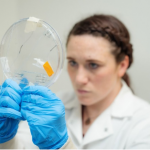
Mend the Gap: Spotlight – with Tanya Bennet
November 1, 2022
In this interview, we talk with Tanya Bennet, from the UBC New Frontiers in Research Fund Project, Mend the Gap. Tanya is a PhD candidate in the in vitro testing team led by Dr. Karen Cheung.
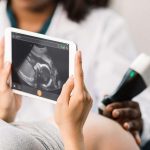
UBC Participating in $50M International Research Program to Reduce Stillbirth Incidence
October 21, 2022
UBC is part of a 3-year, integrated research program funded by Wellcome Leap to reduce the incidence of stillbirths by one-half.

PhD Student Amirhossein Omidvar Wins Award for Excellence in Microsystems Fabrication
July 19, 2022
Established by CMC Microsystems, TEXPO offers graduate students in Canada’s National Design Network® (CNDN) a unique opportunity to demonstrate their novel applications of micro-nano technologies to industry representatives and academic peers.

ECE Professor Sudip Shekhar First Canadian to Receive Schmidt Science Polymaths Award
July 15, 2022
Dr. Shekar plans to build biosensors for inexpensive yet robust point-of-care biomedical testing – a potentially game-changing technology that could expand testing capacity for isolated communities, emergency services, drive-through testing and drug stores, and eventually for at-home use.

UBC-Rogers Collaborative Research Project on Tele-Ultrasound Wins Prestigious Best Paper Award
July 5, 2022
Electrical and Computer Engineering PhD candidate David Black and his supervisor Professor Tim Salcudean have won the Best Paper Award at the 14th Hamlyn Symposium on Medical Robotics held June 26-29, 2022 at the Royal Geographical Society. Their paper, “A Mixed Reality System for Human Teleoperation in Tele-Ultrasound,” emerged from collaborative researchs enabled by the UBC-Rogers partnership on 5G research and development.

Governor General’s Gold Medal awarded to ICICS Member’s PhD Student Mohammad Jafari
June 7, 2022
Mohammad’s high-achieving studies took place under supervisor and ICICS member Purang Abolmaesumi at the Robotics and Control Laboratory, where he studied deep learning for medical imaging.

$24 Million Spinal Cord Repair Project Funded
January 12, 2022
An international multidisciplinary team led by Dr. John Madden, who leads the ICICS Bionics Network is working on a novel approach that may help people with spinal cord injury.

Rogers and UBC Renew 5G Research Partnership through 2025
Nov 18, 2021
Four-year $4.8 million partnership will focus on new 5G research projects in areas like wildfire management that will help the province respond to new environmental challenges.

BC Health Minister Dix Applauds BMIAI COVID-19 Supercluster Project
September 18, 2020
Unveiled at the beginning of 2020, the Point-of-Care Ultrasound for COVID-19 project’s overarching goal is to provide ultrasound bedside tools for doctors in urban, rural, and remote communities.
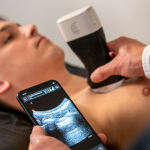
ICICS Researchers Helping to Develop Ultrasound Scanning Network for COVID-19 Diagnosis
May 27, 2020
ICICS researchers are collaborating with local partners to establish a network of portable, handheld ultrasound scanners that can soon accelerate COVID-19 diagnosis in B.C. and potentially beyond.

ICICS Researchers Awarded Supercluster Project: Intelligent Network for Point-of-Care Ultrasound
January 20, 2020
Drs. Purang Abolmaesumi, Robert Rohling and Teresa Tsang have been awarded funding for their Intelligent Network for Point-of-Care Ultrasound project through Canada's Digital Technology Supercluster.

SWAVE Ultrasound Elastography Eliminates Need for Biopsies
June 15, 2019
ICICS researchers have invented a new technique to measure the health of tissue without a needle.
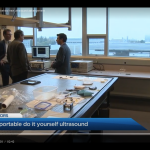
Global National TV segment: UBC Researchers Behind New Ultrasound Advancement
October 7, 2018
ICICS researchers Rob Rohling and Edmond Cretu along with their graduate student Carlos Eduardo discuss their ultrasound innovation that could change health care.
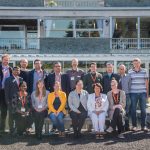
ICICS Hosts “The Future of Digital Innovation”
September 25, 2018
On September 17 and 18, ICICS hosted "The Future of Digital Innovation” for research alumni from Friedrich-Alexander-Universität (FAU) Erlangen-Nürnberg who now work in the USA or Canada. The event allowed these FAU Research Alumni members to meet each other, exchange ideas, and strengthen their affiliation with FAU, while learning more about parallel work being done at UBC.

UBC Breakthrough Opens Door to $100 Ultrasound Machine
September 11, 2018
Carlos Gerardo, a PhD candidate in Electrical and Computer Engineering, along with supervising professors Robert Rohling and Edmond Cretu, have developed a new ultrasound probe that could reduce the cost of ultrasound scanners to $100.

CFI Funds First Dedicated Ultrasound Imaging Research Facility in BC
January 25, 2018
The Perinatal Research IMaging Evaluation (PRIME) Centre is a new ultrasound research facility that is a hub for researchers to create substantial advances in health care through the use of cutting edge technology.
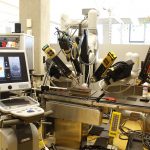
ICICS Awarded $12.9M from CFI
June 15, 2009
A CFI Leading-Edge Fund (LEF) application initiated and led by ICICS will enable equipping new and existing laboratories with a range of specialized equipment to further innovations in five theme areas where ICICS researchers have established international leadership.